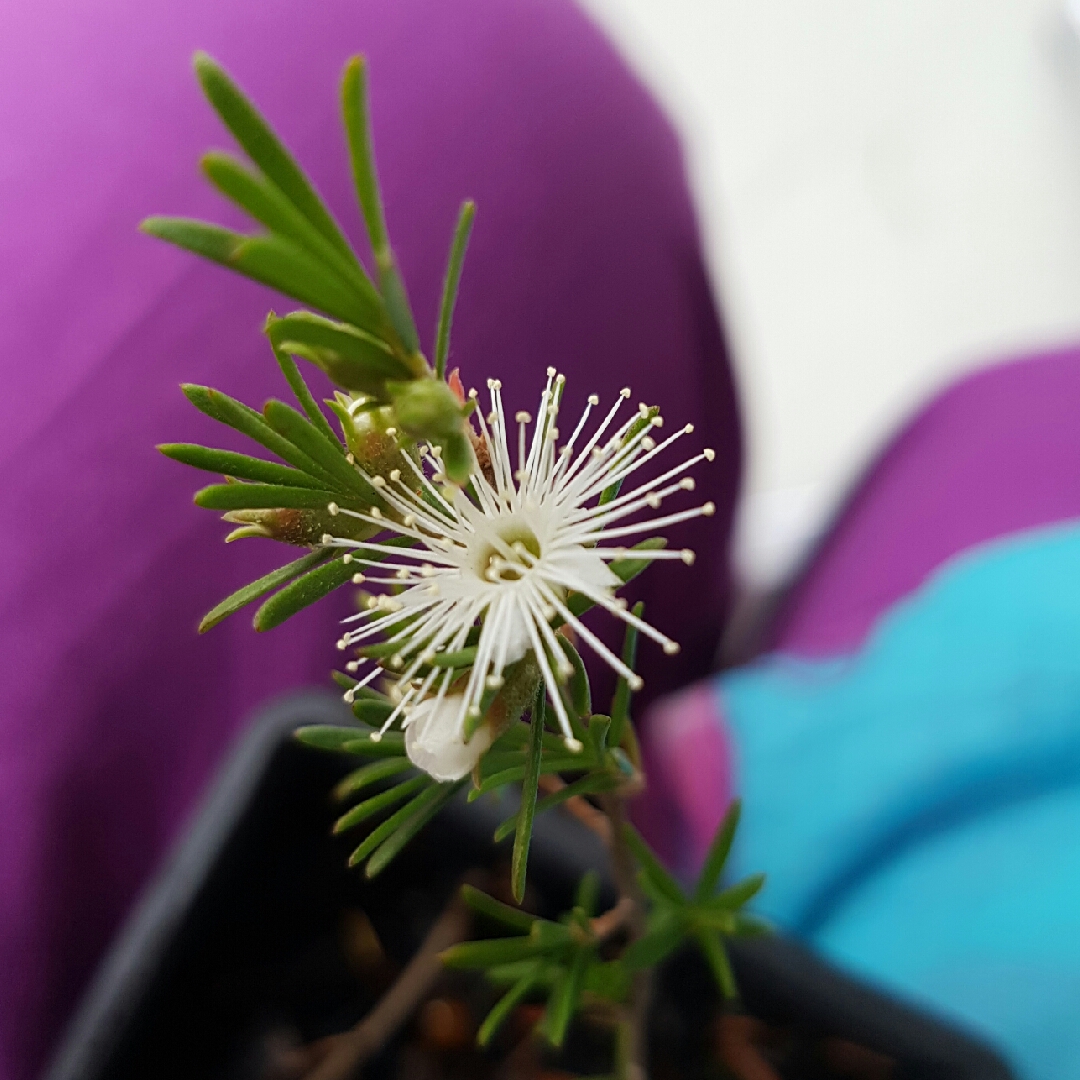
Kunzea ambigua
Tick Bush
Kunzia are shrubs, sometimes small trees native to Australia. They usually have small, aromatic leaves, and flowers similar to Leptospermum but with longer stamens. Kunzea ambigua - 'Tick Bush - is commonly found growing in dense thickets in coastal regions. The leaves are small and linear in shape. It bears masses of fluffy creamy-white flowers in Spring, followed by seed capsules that are distinctive, but remain on the plant only until the fruit matures.
Contributed by @KathyB
-
Full sun to partial shade
-
Very little water
-
Frost Hardy: 23F (-5°C)
-
Light and free draining
Common name
Tick Bush
Latin name
Kunzea ambigua
type
Shrub
family
Myrtaceae
ph
5.0 - 7.0 Acid - Neutral
Plant & bloom calendar
-
Best time to plant
full grown dimensions
 3.00 M
3.00 M
3.00 M
3.00 M
Kunzea ambigua
Kunzia are shrubs, sometimes small trees native to Australia. They usually have small, aromatic leaves, and flowers similar to Leptospermum but with longer stamens. Kunzea ambigua - 'Tick Bush - is commonly found growing in dense thickets in coastal regions. The leaves are small and linear in shape. It bears masses of fluffy creamy-white flowers in Spring, followed by seed capsules that are distinctive, but remain on the plant only until the fruit matures.
Propagation by seed or cuttings
From Early Spring TO Early Spring
Propagation is easy from both seed and cuttings. If seed is being collected, the plants need to be kept under observation or the seed will be lost. Plants grown from seed can take many years to flower (up to 10) and it is best to propagate from cuttings taken from a mature plant that has already reached the flowering stage. In the latter case, plants should flower within 3 years.
Planting Outdoors Spring
From Early Spring TO Early Spring
Plant pot grown young plants in a sunny or partially shaded spot in well drained soil. Keep well watered until new growth is evident.











